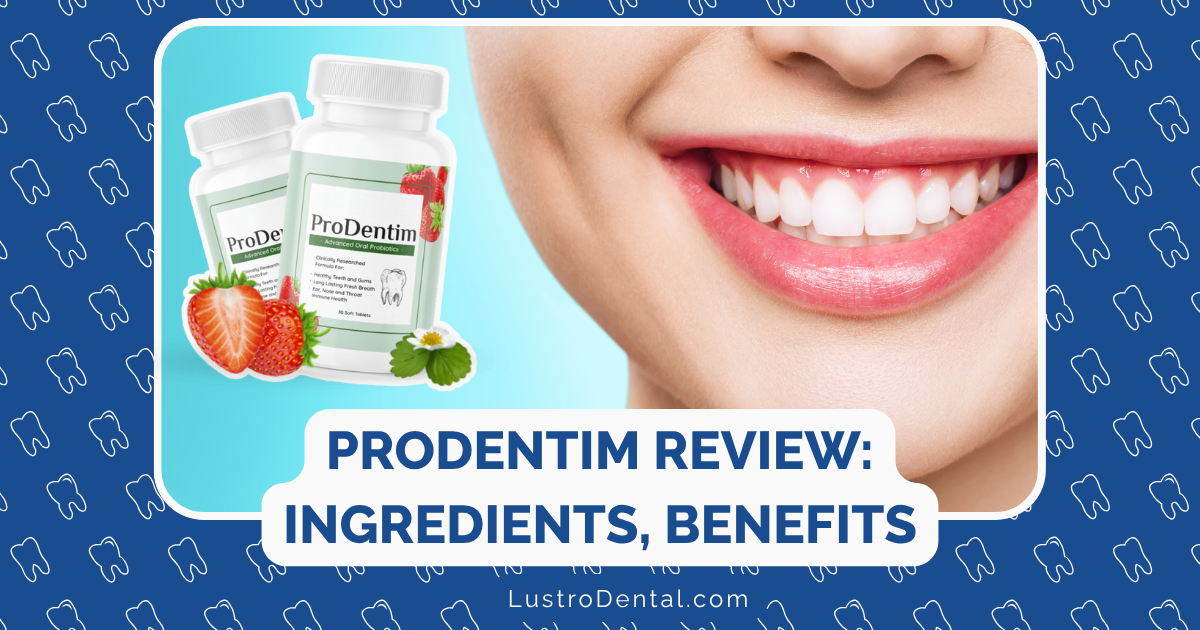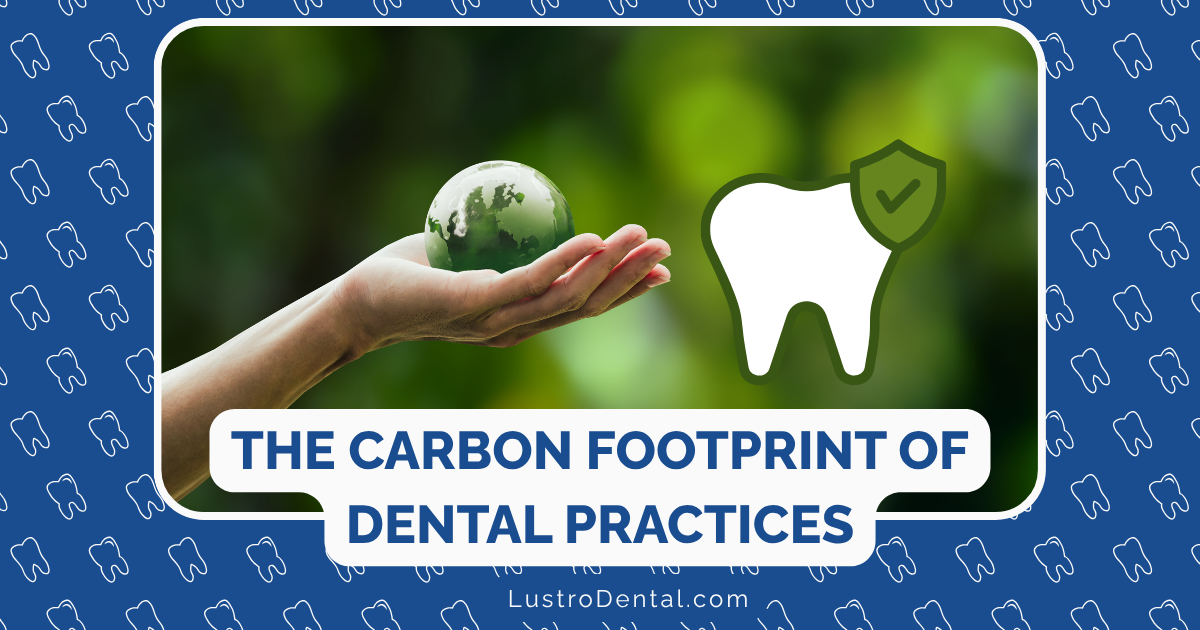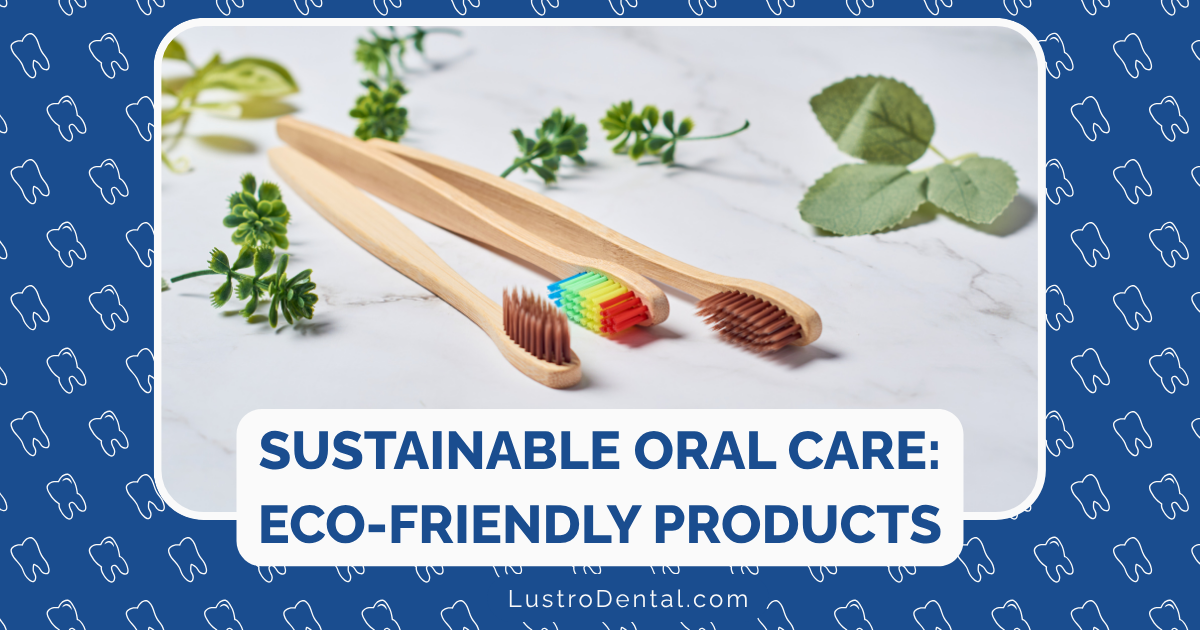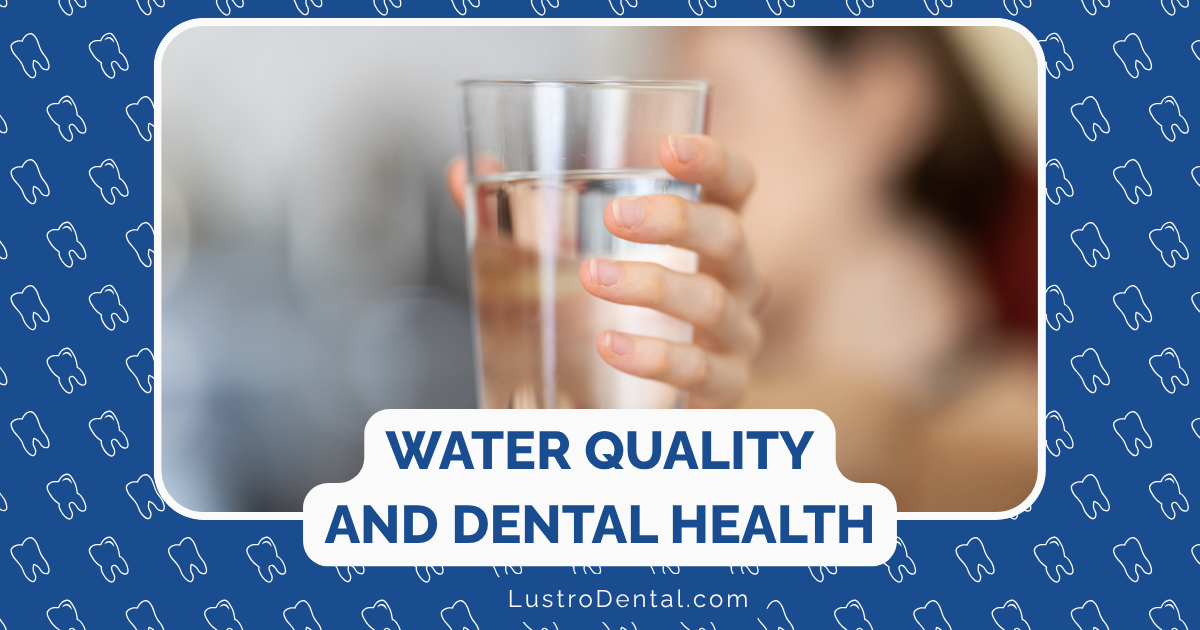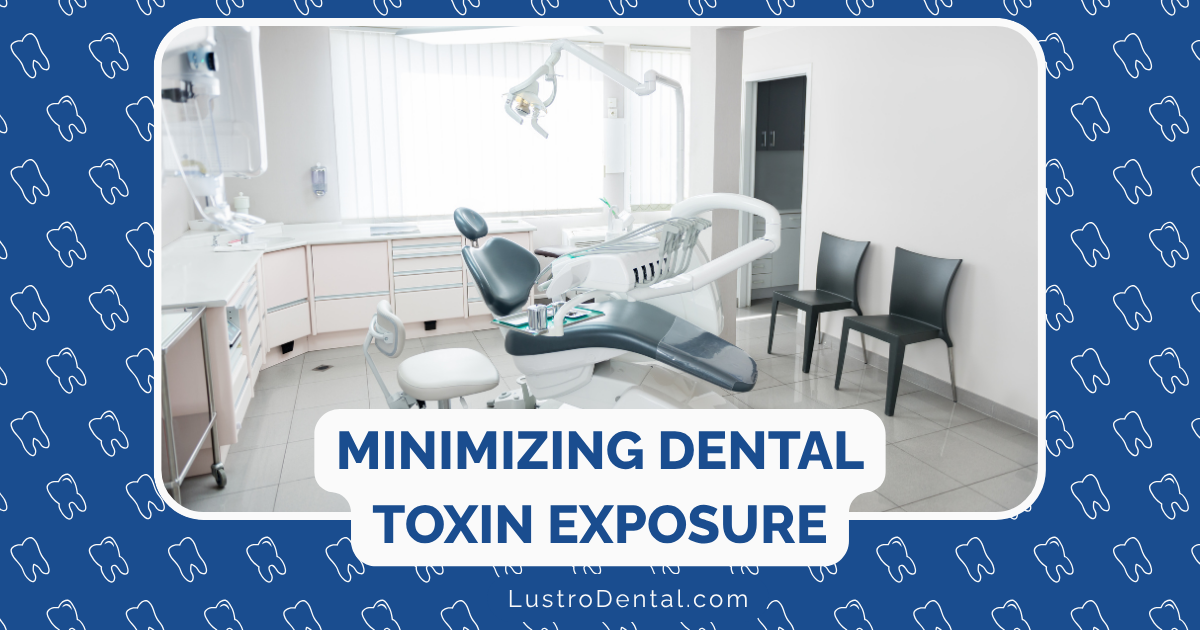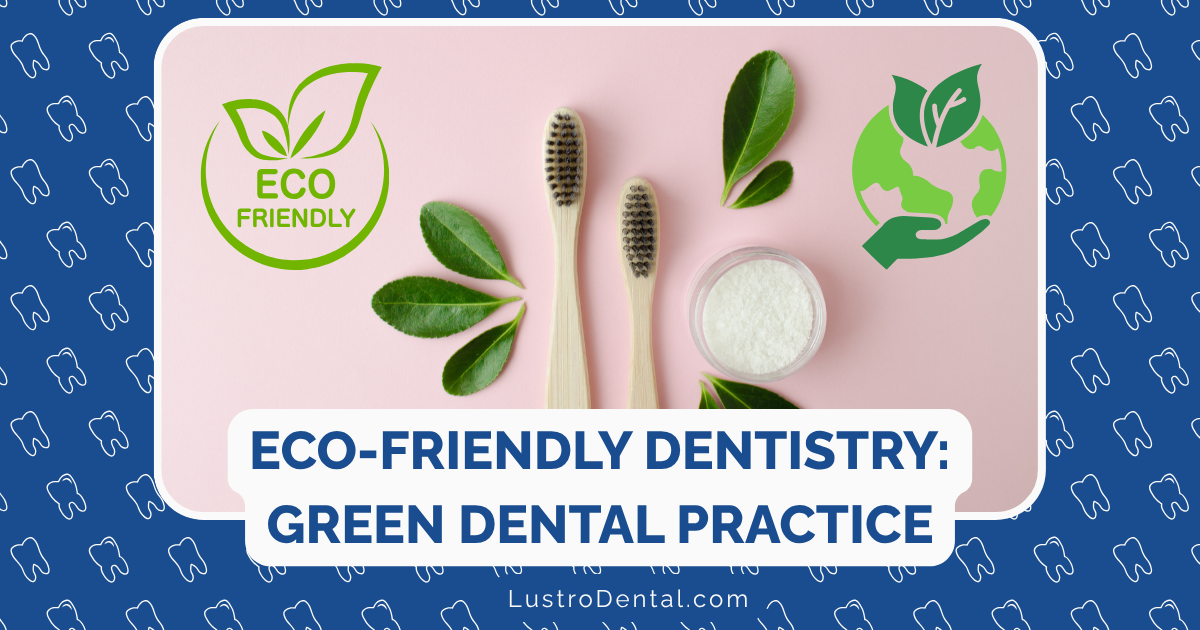Healing Your Gums Naturally: Evidence-Based Approaches That Actually Work
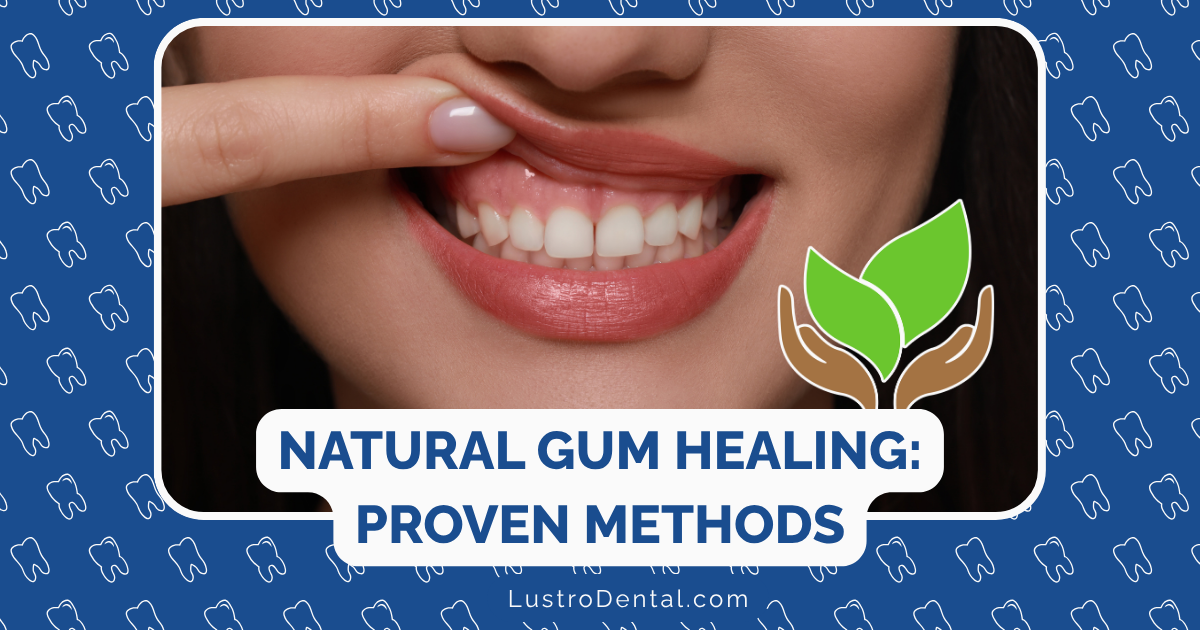
Gum health is a cornerstone of overall wellness that often doesn’t receive the attention it deserves. Beyond just supporting your teeth, your gums are living tissue that can reflect—and affect—your body’s broader health status. When gum problems arise, many people seek natural solutions that complement conventional dental care.
But with countless natural remedies being promoted online, how do you separate fact from fiction? Which natural approaches to gum health are actually backed by scientific evidence?
This comprehensive guide explores evidence-based natural strategies for healing and maintaining healthy gums. We’ll examine the research behind various natural remedies, explain how they work, and provide practical guidance for incorporating them into your oral care routine.
Understanding Gum Health: The Foundation
Before exploring natural remedies, it’s essential to understand what constitutes healthy gums and what happens when gum disease develops.
Anatomy of Healthy Gums
Healthy gums are characterized by:
- Color: Typically coral pink or light brown (depending on ethnicity)
- Texture: Firm and resilient with a stippled appearance (like an orange peel)
- Shape: Fit snugly around teeth with sharp, knife-edge margins
- Bleeding: None, even during brushing and flossing
- Comfort: No pain, tenderness, or sensitivity
The Progression of Gum Disease
Gum disease typically develops in stages:
1. Gingivitis (Reversible)
- Cause: Bacterial plaque accumulation along the gumline
- Symptoms: Redness, swelling, bleeding during brushing or flossing
- Tissue damage: None to the supporting bone or connective tissue
- Reversibility: Completely reversible with proper care
2. Early Periodontitis (Partially Reversible)
- Cause: Untreated gingivitis allowing bacteria to spread below the gumline
- Symptoms: Deeper inflammation, beginning of pocket formation
- Tissue damage: Initial bone loss begins
- Reversibility: Damage can be halted, but some changes may be permanent
3. Advanced Periodontitis (Management Focused)
- Cause: Progressive bacterial infection and inflammatory response
- Symptoms: Receding gums, deep pockets, loose teeth, persistent bad breath
- Tissue damage: Significant bone and connective tissue loss
- Reversibility: Focus shifts to managing disease and preventing further damage
Understanding this progression highlights why early intervention with evidence-based approaches is so important. Natural remedies are most effective at the gingivitis stage and as preventive measures, though they can also support professional treatment of more advanced conditions.
Signs Your Gums Need Attention
Recognizing early warning signs allows you to take action before significant damage occurs. Watch for these indicators that your gums need attention:
Visual Changes
- Redness: Healthy gums are coral pink; redness indicates inflammation
- Swelling: Puffy or bulbous appearance around teeth
- Recession: Gums pulling back, making teeth appear longer
- Spaces between teeth: New gaps where teeth previously touched
Functional Changes
- Bleeding: During brushing, flossing, or sometimes spontaneously
- Sensitivity: Discomfort when consuming hot, cold, or sweet items
- Pain or tenderness: Particularly when chewing or touching gums
- Bad breath: Persistent despite good oral hygiene
Structural Changes
- Loose teeth: Any mobility in previously stable teeth
- Changes in bite: Teeth fitting together differently than before
- Pus: Yellow or white discharge from the gumline
- Visible pockets: Spaces between teeth and gums where food can trap
According to the American Academy of Periodontology, nearly half of American adults have some form of gum disease, yet many don’t recognize the early warning signs. Being proactive about these symptoms can significantly impact your treatment success, especially when incorporating natural approaches.
The Oral Microbiome: Key to Gum Health
Recent scientific advances have transformed our understanding of gum health by highlighting the crucial role of the oral microbiome—the community of microorganisms living in your mouth.
Understanding the Oral Microbiome
Your mouth naturally contains hundreds of species of bacteria, fungi, viruses, and other microorganisms living in a complex ecosystem. In a healthy mouth, these microbes exist in a balanced relationship with each other and with your body.
- A typical healthy mouth contains 500-700 different microbial species
- These microorganisms form structured communities called biofilms
- Some species are beneficial, some are potentially harmful, and many are neutral
- The composition varies between individuals and can change over time
The Microbiome-Gum Health Connection
Research published in the Journal of Dental Research shows that gum disease isn’t simply caused by the presence of “bad bacteria” but rather by an imbalance in the microbial community—a condition called dysbiosis.
In a healthy oral microbiome:
- Beneficial bacteria help control potentially harmful species
- Diverse bacterial communities prevent any single pathogenic species from dominating
- Certain bacteria actually produce compounds that reduce inflammation
- The immune system maintains a balanced relationship with resident microbes
In dysbiosis:
- The diversity of bacteria decreases
- Harmful species become more abundant
- The biofilm structure changes, becoming more resistant to removal
- Inflammation increases as the immune system responds to the shift
Factors That Disrupt the Oral Microbiome
Several common factors can disturb your oral microbiome balance:
- Antibiotics: Kill beneficial bacteria along with harmful ones
- Alcohol-based mouthwashes: Disrupt the natural bacterial balance
- Dry mouth: Reduces the protective and regulatory effects of saliva
- Poor diet: High sugar consumption favors harmful bacterial species
- Smoking: Significantly alters the oral microbiome composition
- Stress: Affects immune function and saliva composition
Natural Approaches to Microbiome Balance
Restoring and maintaining a healthy oral microbiome is a fundamental aspect of natural gum healing:
Prebiotics for Oral Health
Prebiotics are compounds that selectively feed beneficial bacteria:
- Dietary sources: Fibrous fruits and vegetables, whole grains
- Xylitol: Natural sweetener that inhibits harmful bacteria while supporting beneficial ones
- Plant polyphenols: Found in green tea, berries, and dark chocolate
Probiotics for Gum Health
Oral probiotics introduce beneficial bacteria to help restore balance:
- Targeted strains: Specific bacteria known to support gum health
- Delivery methods: Lozenges, chewable tablets, or specialized toothpastes
- Consistency: Regular use provides better results than occasional application
Research in the Journal of Clinical Periodontology demonstrates that supporting the oral microbiome through prebiotic and probiotic approaches can significantly improve gum health parameters, including reduced bleeding, decreased pocket depth, and lower inflammation markers.
Evidence-Based Herbal Remedies
Many traditional herbal remedies for gum health have now been scientifically validated. Here are the most promising herbs with substantial research supporting their effectiveness:
Aloe Vera
Scientific Evidence
A systematic review published in the Journal of Clinical and Experimental Dentistry analyzed multiple clinical trials and found that aloe vera gel:
- Reduces gingival inflammation comparable to chlorhexidine (a prescription mouthwash)
- Decreases plaque accumulation
- Accelerates healing after surgical procedures
- Has minimal side effects compared to conventional treatments
How It Works
- Contains anti-inflammatory compounds like acemannan
- Provides antimicrobial effects against oral pathogens
- Stimulates fibroblasts that produce collagen for tissue repair
- Creates a protective barrier over irritated tissues
Practical Application
- As a gel: Apply directly to gums after brushing
- As a mouthwash: Dilute pure aloe vera juice with water (50/50) and rinse for 30 seconds
- Frequency: 1-2 times daily for best results
Tea Tree Oil
Scientific Evidence
Research published in the Australian Dental Journal found that tea tree oil:
- Significantly reduces gingival bleeding index scores
- Decreases plaque levels when used in mouthwash formulations
- Effectively targets Porphyromonas gingivalis, a key bacterium in periodontal disease
- Provides anti-inflammatory benefits beyond its antimicrobial action
How It Works
- Contains terpinen-4-ol, a compound with potent antimicrobial properties
- Penetrates biofilms more effectively than many conventional antiseptics
- Reduces production of pro-inflammatory cytokines
- Minimally affects beneficial bacteria compared to broad-spectrum antiseptics
Practical Application
- As a diluted rinse: 1-2 drops in a cup of warm water (never use undiluted)
- In toothpaste: Add 1 drop to your toothpaste before brushing
- Caution: Always dilute properly to avoid tissue irritation
Turmeric (Curcumin)
Scientific Evidence
Multiple clinical trials, including a study in the Journal of Indian Society of Periodontology, demonstrate that turmeric:
- Reduces gingival inflammation comparable to standard treatments
- Decreases pocket depth when applied locally
- Provides antioxidant protection to gum tissues
- May prevent attachment loss in early periodontitis
How It Works
- Curcumin inhibits inflammatory pathways (particularly NF-κB)
- Neutralizes free radicals that damage gum tissue
- Reduces activity of matrix metalloproteinases that break down connective tissue
- Modulates immune response to bacterial challenge
Practical Application
- As a paste: Mix with water and apply directly to gums
- As a rinse: Dissolve 1 teaspoon in warm water and swish
- Dietary inclusion: Incorporate turmeric with black pepper (enhances absorption) into meals
- Supplements: Curcumin supplements with enhanced bioavailability
Green Tea
Scientific Evidence
Research in the Journal of Periodontology shows that green tea consumption:
- Is inversely related to periodontal disease prevalence
- Reduces gingival bleeding and pocket depth
- Decreases alveolar bone resorption
- Inhibits growth of periodontal pathogens
How It Works
- Contains catechins (particularly EGCG) with anti-inflammatory properties
- Inhibits bacterial adhesion to oral tissues
- Blocks enzymes that break down connective tissue
- Reduces oxidative stress in gum tissues
Practical Application
- As a beverage: Drink 2-3 cups of unsweetened green tea daily
- As a mouthwash: Cool brewed tea and use as a rinse
- As a compress: Apply cooled tea bags directly to inflamed areas
- In combination: Particularly effective when combined with other approaches
Pomegranate
Scientific Evidence
Studies published in the Journal of Herbal Pharmacotherapy found that pomegranate extracts:
- Significantly reduce plaque-forming bacteria
- Decrease inflammatory markers in gum tissue
- Improve clinical signs of gingivitis
- Enhance healing after periodontal procedures
How It Works
- Contains punicalagins with strong antimicrobial and anti-inflammatory effects
- Ellagic acid inhibits bacterial biofilm formation
- Reduces expression of inflammatory mediators
- Promotes tissue healing through antioxidant mechanisms
Practical Application
- As a rinse: Dilute pure pomegranate juice and swish for 1 minute
- Topical application: Apply extract directly to affected areas
- Dietary inclusion: Regular consumption of pomegranate fruit or juice
- Commercial products: Specialized oral care products containing pomegranate extract
These evidence-based herbal remedies can be incorporated into your oral care routine individually or in combination for enhanced effects. When selecting commercial products containing these herbs, look for those with standardized extracts and minimal additional ingredients.
Nutritional Approaches to Gum Healing
What you eat plays a significant role in gum health. Research has identified several key nutrients and dietary patterns that support gum healing and maintenance.
Essential Nutrients for Gum Health
Vitamin C
Scientific evidence: A systematic review in the Journal of Periodontal Research found that vitamin C deficiency is strongly associated with periodontal disease, while supplementation improves treatment outcomes.
Mechanisms:
- Essential for collagen synthesis and tissue repair
- Enhances immune function against oral pathogens
- Provides antioxidant protection to gum tissues
- Promotes wound healing after tissue damage
Food sources: Citrus fruits, strawberries, kiwi, bell peppers, broccoli
Supplementation: 500-1000mg daily shows beneficial effects for gum health
Vitamin D
Scientific evidence: Research published in the Journal of Periodontal Research demonstrates that vitamin D status is inversely related to periodontal disease severity, and supplementation improves treatment outcomes.
Mechanisms:
- Regulates immune response to oral bacteria
- Enhances calcium absorption for bone maintenance
- Reduces production of inflammatory cytokines
- Stimulates production of antimicrobial peptides
Food sources: Fatty fish, egg yolks, fortified foods, sunlight exposure
Supplementation: 1000-2000 IU daily, ideally with vitamin K2 for synergistic effects
Coenzyme Q10
Scientific evidence: Clinical trials in the Journal of the International Academy of Periodontology show that CoQ10 supplementation reduces gingival inflammation and improves healing after periodontal treatment.
Mechanisms:
- Provides cellular energy for tissue repair
- Acts as a powerful antioxidant in gum tissues
- Enhances immune cell function
- Improves oxygen utilization in inflamed tissues
Food sources: Organ meats, fatty fish, whole grains, spinach (though supplementation provides higher therapeutic doses)
Supplementation: 100-200mg daily, preferably in ubiquinol form for better absorption
Omega-3 Fatty Acids
Scientific evidence: A meta-analysis in the Journal of Clinical Periodontology found that omega-3 supplementation significantly improves periodontal parameters, including pocket depth and attachment level.
Mechanisms:
- Produce anti-inflammatory resolvins and protectins
- Compete with arachidonic acid, reducing inflammatory mediators
- Modulate immune response to bacterial challenge
- Support cell membrane integrity in gum tissues
Food sources: Fatty fish, flaxseeds, chia seeds, walnuts
Supplementation: 1-2g daily of combined EPA and DHA from high-quality fish oil
Anti-Inflammatory Diet Patterns
Beyond individual nutrients, overall dietary patterns significantly impact gum health:
Mediterranean Diet
Research in the Journal of Clinical Periodontology shows that adherence to a Mediterranean diet is associated with:
- Lower prevalence of periodontal disease
- Reduced gingival inflammation
- Better response to periodontal treatment
- Slower progression of attachment loss
Key components:
- Abundant plant foods (fruits, vegetables, legumes)
- Olive oil as the primary fat source
- Moderate fish consumption
- Limited red meat
- Moderate wine consumption with meals
Low-Glycemic Approach
Studies in the Journal of Dental Research demonstrate that diets high in refined carbohydrates and sugars are associated with:
- Increased gingival inflammation
- Higher plaque levels
- More rapid progression of periodontal disease
- Poorer response to treatment
Implementation strategies:
- Choose complex carbohydrates over simple sugars
- Pair carbohydrates with proteins and healthy fats
- Limit snacking between meals
- Focus on whole, unprocessed foods
Antioxidant-Rich Foods
Research in Nutrition Reviews shows that diets high in antioxidants are associated with:
- Lower levels of oxidative stress in periodontal tissues
- Reduced inflammatory markers
- Better tissue repair capabilities
- Enhanced immune function against oral pathogens
Key sources:
- Colorful fruits and vegetables (berries, leafy greens, orange and red produce)
- Herbs and spices (clove, cinnamon, oregano)
- Green tea and dark chocolate
- Nuts and seeds
By combining targeted nutrient supplementation with anti-inflammatory dietary patterns, you create an internal environment that supports gum healing and helps prevent recurrence of gum disease.
Lifestyle Factors That Impact Gum Health
Beyond specific remedies and nutrients, several lifestyle factors significantly influence gum health and healing.
Stress Management
Research in the Journal of Periodontology demonstrates that psychological stress is strongly associated with:
- Increased severity of periodontal disease
- Poorer response to treatment
- Higher levels of inflammatory markers
- Compromised immune function
Evidence-based stress reduction approaches:
- Mindfulness meditation: Shown to reduce inflammatory markers relevant to periodontal disease
- Regular physical activity: Moderates stress response and improves periodontal outcomes
- Adequate sleep: Essential for immune function and tissue repair
- Breathing exercises: Can reduce immediate stress response
Tobacco Cessation
According to the American Academy of Periodontology, tobacco use is one of the most significant risk factors for periodontal disease:
- Smokers are 2.5-3.5 times more likely to develop severe periodontal disease
- Healing after treatment is significantly impaired
- Gum tissue receives less oxygen and nutrients
- Immune response to oral bacteria is compromised
Benefits of cessation:
- Improved blood flow to gum tissues begins within days
- Enhanced immune function develops over weeks
- Better response to both natural remedies and conventional treatments
- Reduced risk of recurrence after successful treatment
Hydration
Proper hydration supports gum health through several mechanisms:
- Maintains adequate saliva flow, which contains protective factors
- Helps flush away food particles and bacteria
- Supports cellular function in gum tissues
- Facilitates nutrient delivery and waste removal
Implementation strategies:
- Aim for approximately 8 glasses of water daily
- Increase intake during hot weather or physical activity
- Consider the timing of hydration (consistent throughout the day)
- Be aware that many medications can cause dry mouth, requiring additional hydration
Physical Activity
Regular exercise benefits gum health through multiple pathways:
- Improves circulation to gum tissues
- Enhances immune function
- Reduces chronic inflammation
- Helps regulate blood sugar (important as diabetes is a major risk factor for periodontal disease)
Evidence-based recommendations:
- Aim for at least 150 minutes of moderate activity weekly
- Include both cardiovascular and strength training
- Consistency matters more than intensity
- Even short activity sessions provide benefits
By addressing these lifestyle factors alongside specific natural remedies, you create a comprehensive approach that addresses the root causes of gum problems while supporting your body’s natural healing capabilities.
The Power of Probiotics for Gum Health
Probiotics represent one of the most promising evidence-based approaches to natural gum healing. These beneficial microorganisms help restore balance to the oral microbiome and address the root cause of many gum problems.
Scientific Evidence for Oral Probiotics
Research published in prestigious journals like the Journal of Clinical Periodontology and Journal of Dental Research demonstrates that specific probiotic strains can:
- Reduce gingival inflammation
- Decrease bleeding on probing
- Lower plaque scores
- Inhibit growth of periodontal pathogens
- Enhance results of conventional periodontal treatment
A meta-analysis of 28 randomized controlled trials found that probiotics provided significant benefits for patients with gingivitis and periodontitis, both as standalone therapy and as an adjunct to conventional treatment.
How Oral Probiotics Work
Oral probiotics support gum health through multiple mechanisms:
- Competitive exclusion: Beneficial bacteria occupy space and consume resources, preventing harmful bacteria from establishing themselves
- Production of antimicrobial compounds: Many probiotic strains produce substances that specifically inhibit pathogenic bacteria
- Biofilm modification: Probiotics can alter the structure of dental plaque, making it less harmful
- Immune modulation: Beneficial bacteria help regulate the immune response, reducing excessive inflammation
- Barrier enhancement: Some strains strengthen the epithelial barrier, making it more resistant to bacterial invasion
Key Probiotic Strains for Gum Health
Research has identified several probiotic strains with specific benefits for gum health:
Lactobacillus reuteri
- Evidence: Multiple clinical trials show significant reductions in plaque, gingivitis, and pocket depth
- Mechanism: Produces reuterin, a powerful antimicrobial compound that targets periodontal pathogens
- Unique benefit: Particularly effective against Porphyromonas gingivalis, a key pathogen in periodontal disease
Lactobacillus paracasei
- Evidence: Clinical studies demonstrate reduced inflammation and improved gingival health
- Mechanism: Modulates immune response and produces antimicrobial peptides
- Unique benefit: Helps maintain balanced inflammatory response in gum tissues
Bifidobacterium lactis
- Evidence: Research shows reduced bleeding on probing and decreased inflammatory markers
- Mechanism: Enhances epithelial barrier function and modulates immune response
- Unique benefit: Works synergistically with other probiotic strains for enhanced effects
ProDentim: A Comprehensive Oral Probiotic Solution
ProDentim represents an innovative approach to gum health through targeted probiotic therapy. Each tablet contains 3.5 billion CFUs (colony-forming units) of beneficial bacteria specifically selected for oral health:
- Lactobacillus paracasei: Helps inhibit the growth of harmful bacteria associated with gum disease
- Lactobacillus reuteri: Produces antimicrobial compounds that target pathogenic bacteria while supporting gum health
- Bifidobacterium lactis BL-04: Helps maintain a balanced oral microbiome and supports immune function
The formula also includes supporting ingredients:
- Inulin: A prebiotic fiber that selectively feeds beneficial bacteria
- Tricalcium phosphate: Provides minerals that support gum tissue health
- Peppermint: Natural flavor with additional antimicrobial properties
Clinical research on ProDentim’s specific formulation has shown significant improvements in multiple parameters of gum health:
- Reduced gingival inflammation
- Decreased bleeding on probing
- Improved pocket depths
- Enhanced tissue healing after periodontal procedures
Many users report noticeable improvements in gum health within 2-4 weeks of consistent use, with continued benefits developing over time.
Practical Implementation of Oral Probiotics
For optimal results with oral probiotics like ProDentim:
- Consistency: Take daily as directed for continuous support of your oral microbiome
- Timing: For maximum effectiveness, use after brushing when bacterial counts are lowest
- Dissolution: Allow tablets to dissolve slowly in the mouth rather than chewing and swallowing quickly
- Complementary approaches: Combine with other evidence-based natural remedies for synergistic effects
- Patience: Allow 2-4 weeks for initial improvements, with continued benefits developing over 2-3 months
By incorporating oral probiotics into your natural gum healing regimen, you address one of the fundamental causes of gum problems—microbial imbalance—in a way that works with your body’s natural processes rather than against them.
Natural Approaches to Professional Treatments
While many gum issues can be addressed with home-based natural remedies, some conditions require professional intervention. Fortunately, many dental professionals now incorporate natural approaches into their treatment protocols.
Minimally Invasive Periodontal Therapy
Modern periodontal treatment increasingly focuses on conservative approaches that preserve tissue and support natural healing:
- Laser therapy: Low-level laser treatment reduces inflammation and promotes tissue regeneration
- Air polishing: Uses natural abrasives like glycine powder instead of traditional polishing pastes
- Guided tissue regeneration: Uses growth factors and natural scaffolds to support tissue regrowth
- Microsurgical techniques: Minimal tissue disruption allows for better healing
Research in the Journal of Periodontology shows these approaches often result in better long-term outcomes with less discomfort and faster healing than traditional surgical approaches.
Natural Products in Professional Care
Many dental professionals now offer natural alternatives to traditional treatments:
- Ozone therapy: Powerful natural disinfectant that eliminates pathogens without harming healthy tissue
- Essential oil irrigants: Used in place of chemical antimicrobials for pocket irrigation
- Propolis applications: Natural bee product with antimicrobial and healing properties
- Probiotics as adjunctive therapy: Professional-grade probiotic applications following treatment
Integrative Periodontal Protocols
Forward-thinking periodontists often combine conventional and natural approaches:
- Pre-treatment optimization: Nutritional support and probiotic therapy before procedures
- Complementary modalities: Acupuncture or laser photobiomodulation to reduce inflammation
- Customized home care: Professionally guided natural approaches between visits
- Biocompatibility testing: Identifying materials that work best with your individual biology
Questions to Ask Your Dental Professional
When seeking natural-minded professional care:
- “Do you incorporate minimally invasive techniques in your periodontal treatment?”
- “What natural adjuncts do you recommend alongside conventional treatment?”
- “Are you familiar with the research on oral probiotics like ProDentim for supporting gum health?”
- “How do you feel about integrating nutritional approaches into periodontal care?”
- “What natural home care protocols do you recommend between professional treatments?”
Finding a dental professional who respects your preference for natural approaches while providing evidence-based care creates the optimal environment for gum healing.
Creating Your Holistic Gum Healing Routine
With so many evidence-based natural approaches available, creating a personalized routine can seem overwhelming. This framework helps you build an effective regimen based on your specific needs and preferences.
Step 1: Assessment and Foundation
Begin by honestly evaluating your current gum health and establishing basic practices:
- Self-examination: Note areas of redness, swelling, bleeding, or recession
- Professional evaluation: If possible, get a baseline assessment from a dental professional
- Fundamental hygiene: Ensure proper brushing and flossing technique
- Habit inventory: Identify lifestyle factors that may be contributing to gum issues
Step 2: Core Daily Protocol
Build a consistent daily routine incorporating these evidence-based elements:
Morning Routine
- Gentle brushing: Using soft bristles and proper technique
- Interdental cleaning: Floss, water flosser, or interdental brushes
- ProDentim: Take one tablet, allowing it to dissolve slowly
- Herbal rinse: Consider diluted tea tree oil or green tea
Throughout the Day
- Hydration: Maintain water intake to support saliva production
- Anti-inflammatory diet: Focus on nutrient-dense, whole foods
- Stress management: Brief mindfulness or breathing practices
- Herbal support: Sip green tea or other beneficial herbal teas
Evening Routine
- Thorough cleaning: More comprehensive brushing and interdental cleaning
- Topical application: Apply aloe vera gel or diluted essential oils if needed
- Oil pulling: Consider 5-10 minutes with coconut or sesame oil
- Nutritional support: Take any supplements that support gum health
Step 3: Weekly Intensives
Add these more intensive treatments on a weekly basis:
- Deep herbal treatment: Apply turmeric paste or concentrated aloe for 15-20 minutes
- Extended oil pulling: 15-20 minute session with therapeutic oils
- Gum massage: Gentle stimulation with clean fingers or specialized tools
- Self-assessment: Check for improvements or areas needing more attention
Step 4: Monthly Evaluation and Adjustment
Regularly assess your progress and refine your approach:
- Track improvements: Note changes in redness, swelling, bleeding, or sensitivity
- Rotate remedies: Change herbal treatments to prevent adaptation
- Adjust intensity: Increase or decrease based on your response
- Consider professional support: Schedule check-ups as needed
Sample 30-Day Gum Healing Protocol
For those dealing with active gum inflammation, this comprehensive 30-day protocol combines multiple evidence-based approaches:
Days 1-10: Intensive Initial Phase
- Morning: Gentle brushing, salt water rinse, ProDentim, topical aloe vera
- Afternoon: Green tea rinse, oil pulling with coconut oil (5 minutes)
- Evening: Thorough cleaning, tea tree oil diluted rinse, vitamin C supplement
- Dietary focus: Elimination of refined sugars and processed foods
- Lifestyle: Begin daily stress reduction practice (5-10 minutes)
Days 11-20: Stabilization Phase
- Morning: Brushing with baking soda, interdental cleaning, ProDentim
- Afternoon: Herbal tea (rotating green tea, chamomile, and peppermint)
- Evening: Cleaning, oil pulling (10 minutes), topical turmeric paste
- Dietary focus: Increase omega-3 rich foods and colorful vegetables
- Lifestyle: Add 15 minutes of moderate physical activity daily
Days 21-30: Maintenance and Evaluation
- Morning: Normal brushing, interdental cleaning, ProDentim
- Afternoon: Continue herbal teas, add gum massage
- Evening: Thorough cleaning, rotate between different herbal applications
- Dietary focus: Mediterranean-style eating pattern fully implemented
- Lifestyle: Consistent sleep schedule established
At the end of 30 days, evaluate your progress, note which approaches seemed most effective for your specific situation, and adjust your ongoing maintenance routine accordingly.
When to Seek Professional Care
While natural approaches can be remarkably effective, certain situations require professional dental care. Recognizing these scenarios is crucial for protecting your overall health.
Red Flags That Warrant Immediate Attention
Seek professional care promptly if you experience:
- Severe or increasing pain: Particularly if it disrupts sleep or daily activities
- Significant swelling: Especially if extending beyond the gumline to the face or neck
- Pus discharge: Visible pus from the gumline or when pressing on the gums
- Loose permanent teeth: Any mobility in previously stable teeth
- Rapid recession: Gums receding noticeably over a short period
- Systemic symptoms: Fever, malaise, or swollen lymph nodes accompanying gum issues
These symptoms may indicate serious infections or conditions that require professional intervention.
Conditions Best Managed with Professional Support
Some gum conditions benefit most from a combined approach of professional care and natural remedies:
- Moderate to advanced periodontitis: Once significant bone loss has occurred
- Aggressive periodontitis: Rapid progression requiring intensive intervention
- Necrotizing periodontal disease: Acute, painful condition requiring immediate treatment
- Periodontal abscess: Localized infection that may need drainage
- Gum disease associated with systemic conditions: Diabetes, immune disorders, etc.
Integrating Natural Approaches with Professional Care
The most successful outcomes often come from combining professional treatment with evidence-based natural approaches:
- Before professional treatment: Use natural anti-inflammatories and antimicrobials to reduce bacterial load and inflammation
- During treatment course: Support healing with nutrition, probiotics, and gentle herbal applications
- After professional care: Implement comprehensive natural maintenance to prevent recurrence
- Ongoing management: Regular professional monitoring alongside daily natural protocols
Communicating with Dental Professionals
For a successful partnership with your dental provider:
- Be transparent: Inform them about all natural remedies you’re using
- Ask questions: Inquire about natural adjuncts they recommend
- Seek understanding: Ask them to explain their concerns about any natural approaches they discourage
- Find middle ground: Work together to create an integrated plan that addresses your preferences
- Request monitoring: Ask for specific markers to track improvement
Many dental professionals are increasingly open to evidence-based natural approaches, particularly when presented as complementary to, rather than replacements for, conventional care when needed.
Conclusion: The Path to Naturally Healthy Gums
The evidence is clear: natural approaches to gum health can be remarkably effective, particularly when based on sound scientific research rather than anecdote or marketing claims. By understanding the underlying mechanisms of gum disease and implementing evidence-based natural strategies, you can achieve significant improvements in your gum health while supporting your overall wellbeing.
The most successful approach typically combines multiple strategies:
- Foundational practices: Proper oral hygiene, hydration, and stress management
- Microbiome support: ProDentim probiotics to establish and maintain beneficial bacteria
- Targeted herbal remedies: Evidence-based applications like aloe vera, tea tree oil, and turmeric
- Nutritional optimization: Anti-inflammatory diet rich in key nutrients for gum health
- Professional partnership: Working with dental professionals who respect natural approaches
Remember that consistency matters more than perfection. Even implementing a few evidence-based strategies consistently will likely yield better results than attempting an overly complex regimen that proves difficult to maintain.
By taking a proactive, evidence-based approach to your gum health, you’re not just preventing disease—you’re supporting one of your body’s important interfaces with the environment, contributing to your overall health and wellbeing for years to come.
Frequently Asked Questions
How can I restore my gum tissue naturally?
How can I stimulate gum healing?
How do you heal gum pockets naturally?
What is the holistic approach to gum disease?
Have you tried natural approaches to gum healing? Share your experience in the comments below!
Disclaimer: This article is for informational purposes only and does not constitute medical or dental advice. Always consult with qualified dental professionals about your specific oral health needs, especially for serious or persistent conditions.


